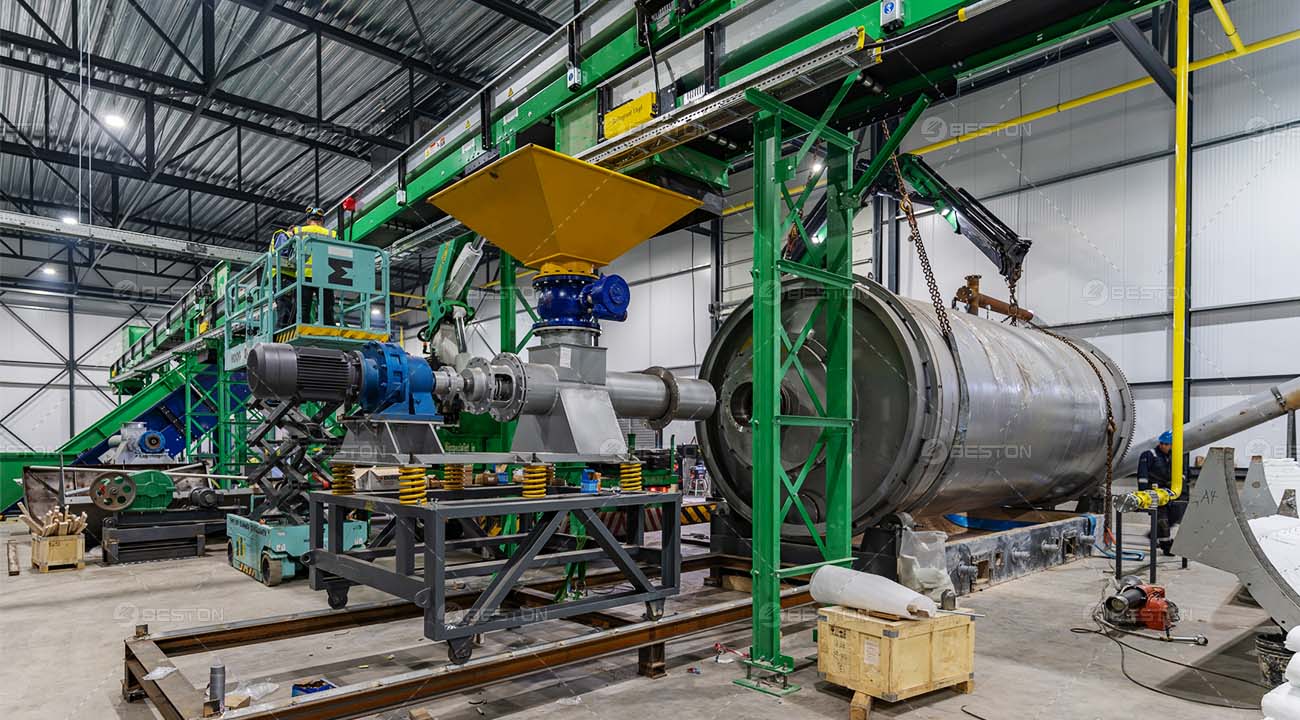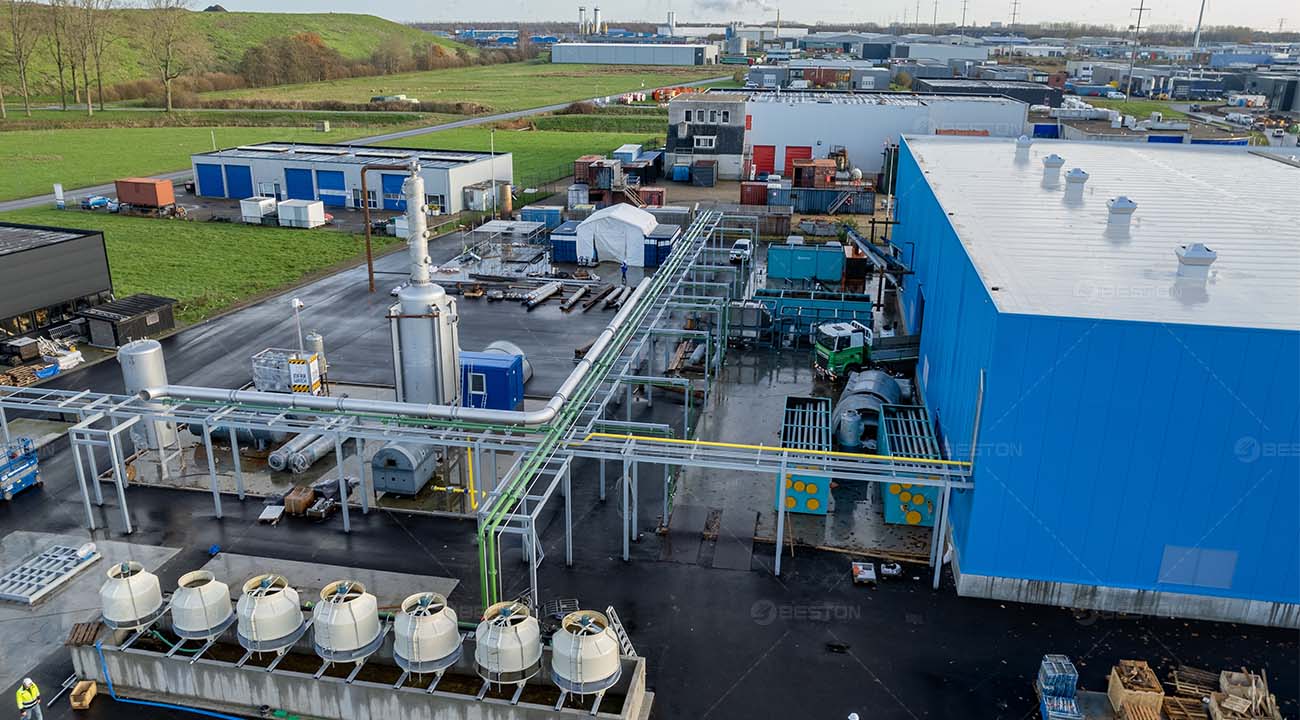Introduction
The pressing need for effective waste plastic recycling
The accumulation of plastic waste presents a dire ecological challenge. In today’s world, where plastics have become an integral part of modern life, traditional methods of disposal have proven inadequate to handle the sheer volume of plastic waste generated. This has led to widespread environmental pollution, impacting ecosystems, wildlife, and human health.
Introducing pyrolysis as a promising solution
Amidst the ongoing search for viable waste plastic recycling methods, a pyrolysis plant has emerged as a promising solution. Pyrolysis, a thermochemical decomposition process, involves subjecting plastic materials to high temperatures in the absence of oxygen. This intricate process breaks down plastic polymers into their constituent elements, yielding valuable byproducts that can be harnessed for various applications.
Understanding Pyrolysis
Delving into the science of pyrolysis
Pyrolysis operates on the principle of thermal decomposition, where heat triggers a series of complex chemical reactions that transform plastic molecules into smaller, more manageable compounds. By controlling temperature, pressure, and residence time, specific output products can be obtained, offering a versatile range of applications across industries.
Differentiating between slow, fast, and intermediate pyrolysis
Pyrolysis can be classified into various types based on the heating rate and process conditions. Slow pyrolysis involves lower temperatures and longer reaction times, favoring the production of char, a solid carbon-rich residue. Fast pyrolysis, on the other hand, emphasizes rapid heating and shorter residence times, resulting in higher yields of liquid products, such as pyrolysis oil. Intermediate pyrolysis strikes a balance between the two, yielding a mix of liquid, gas, and solid outputs.
Pyrolysis Plants: A Technological Overview
The components of a pyrolysis plant
A standard plastic pyrolysis plant consists of several key components that work in tandem to facilitate the pyrolysis process. The feeding system introduces waste plastic into the reactor, where it undergoes thermal transformation. The heating system initiates and maintains the pyrolysis reactions, converting plastic into valuable byproducts. The condensation system then captures and cools volatile gases, converting them into liquid form for further processing. Finally, the collection unit stores the resulting products, ready for utilization.
Cutting-edge advancements in pyrolysis technology
Recent advancements in pyrolysis technology have significantly enhanced its efficiency and feasibility. Innovative reactor designs, coupled with the use of catalysts, have led to improved product yields and enhanced quality. Enhanced heat transfer mechanisms and process automation have streamlined operations, reducing energy consumption and optimizing resource utilization.
Environmental Advantages of Pyrolysis
Reducing plastic pollution and landfills
One of the significant benefits of pyrolysis is its potential to mitigate plastic pollution and reduce the burden on landfills. By converting plastic waste into valuable products, such as fuels and chemicals, pyrolysis offers an environmentally friendly alternative to traditional disposal methods. This can help prevent plastic waste from ending up in oceans, rivers, and natural habitats, safeguarding ecosystems and wildlife.
Mitigating carbon emissions through pyrolysis
Pyrolysis stands out as an environmentally conscious method due to its low carbon footprint. Unlike incineration, which generates substantial greenhouse gas emissions, pyrolysis operates in the absence of oxygen, minimizing the release of harmful gases. Moreover, the pyrolysis byproducts, such as pyrolysis oil, can serve as substitutes for fossil fuels, contributing to the reduction of carbon emissions in various industries.
Economic Viability and Industrial Applications
Exploring the economic benefits of pyrolysis plants
The pyrolysis plant for sale offers a twofold economic advantage. On one hand, they address the pressing issue of plastic waste management, reducing disposal costs and associated environmental liabilities. On the other hand, the valuable byproducts generated by pyrolysis, such as pyrolysis oil, can be sold or utilized in various industries, creating a potential revenue stream and offsetting operational expenses.
Diverse industrial uses of pyrolysis byproducts
The outputs of the pyrolysis process find applications across a spectrum of industries. Pyrolysis oil can be further refined into transportation fuels or used as a feedstock in chemical manufacturing. The solid char can be utilized as an agricultural soil amendment, improving soil fertility and water retention. Additionally, the gases generated during pyrolysis can be employed as an energy source or as raw materials for chemical synthesis.
Challenges and Future Prospects
Addressing the challenges in pyrolysis process optimization
While pyrolysis holds immense promise, it also faces challenges that need to be addressed for optimal performance. Achieving consistent product quality, maximizing yield efficiency, and managing feedstock variations are among the key challenges. Ongoing research and development efforts are focused on refining process parameters, optimizing reactor designs, and developing novel catalysts to overcome these obstacles.
The potential role of pyrolysis in the circular economy
Looking ahead, pyrolysis could play a pivotal role in establishing a circular economy for plastics. By recycling waste plastics into valuable products, pyrolysis aligns with the principles of sustainability and resource efficiency. Incorporating pyrolysis into a comprehensive waste management framework could reshape the plastic consumption and disposal cycle, leading to a more sustainable future. For more information on plastic pyrolysis, please visit our website:https://bestonasia.com/
In conclusion, pyrolysis plants emerge as a beacon of hope in the realm of waste plastic recycling. With their scientific foundation, technological innovations, environmental benefits, and economic viability, pyrolysis plants hold the promise of transforming the plastic waste management landscape. As ongoing research continues to refine pyrolysis technology, the vision of a cleaner, plastic-free world moves closer to becoming a reality.